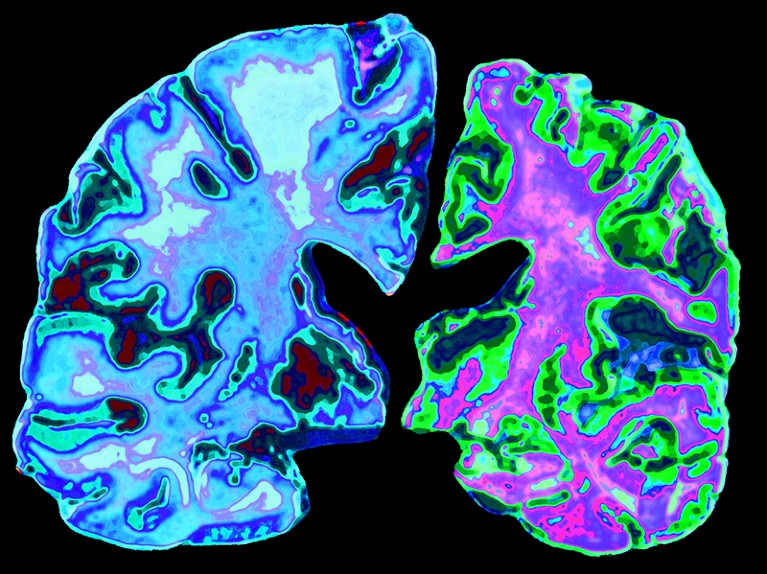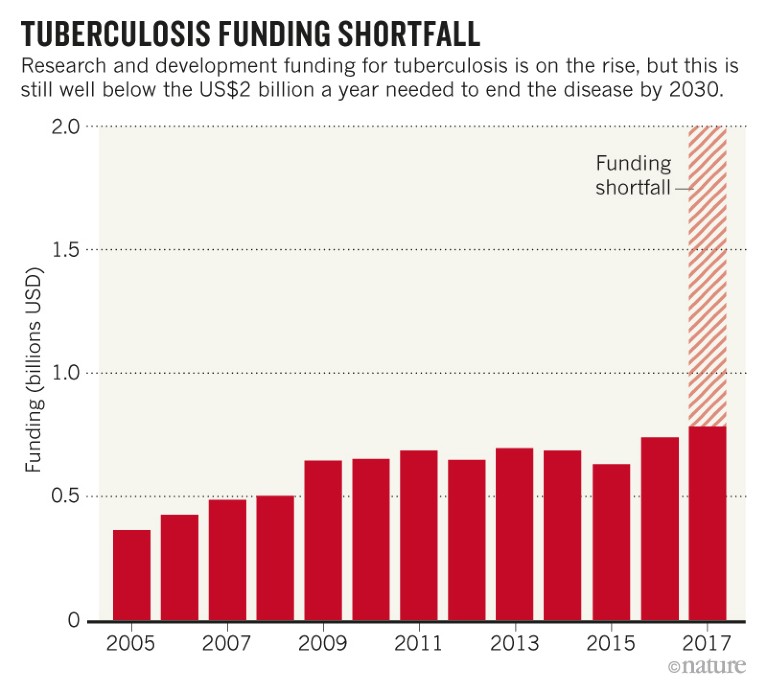Hello Nature readers, this is the news that matters in science today. You can also sign up to get it free in your inbox.

A normal brain of a 70-year-old (left slice), compared with the brain of a 70-year-old with Alzheimer’s disease.Credit: Jessica Wilson/Science Photo Library
‘Transmissible’ Alzheimer’s theory gains traction
A controversial study in 2015 suggested that Alzheimer’s disease might be transferred from one person to another through some medical procedures. Now, neuroscientists have amassed more evidence that the sticky proteins that are a hallmark of neurodegenerative diseases can be transferred between people under particular conditions. They stress that this doesn’t mean that disorders such as Alzheimer’s disease are contagious, but it does raise concerns that certain medical procedures pose a risk that such proteins could be transmitted, and might lead to brain disease decades later.
Go deeper: Expert analysis in Nature News & Views
Nobel appeal to Iran over academic facing death sentence
More than 100 Nobel laureates have written to Iran’s supreme leader demanding that medical researcher Ahmadreza Djalali be released from prison. Djalali was arrested during a visit to Iran in 2016 on charges of “collaboration with a hostile government”. He was convicted of espionage and sentenced to death last year. Djalali, whose health is failing rapidly, denies the charges, and the global scientific community has widely condemned the ruling and sentence.
Satellite spies methane bubbling from Arctic permafrost
For the first time, scientists have used a satellite to estimate how much methane is seeping into the atmosphere from Arctic lakes. Conventionally, researchers have measured methane seepage one lake at a time. Estimating emissions across the Arctic is a significant challenge, but it is crucial to predicting how much permafrost emissions could exacerbate future climate change. Researchers found that the radar aboard Japan’s Advanced Land Observing Satellite was sensitive enough to detect gas bubbles seeping from lakes that form as the ground thaws, painting a broader picture of methane emissions across the region.
All-time high for tuberculosis funding
Global spending on tuberculosis (TB) research hit US$772 million in 2017, the highest sum spent on research into TB in a year, according to the Treatment Action Group, a US activist organization. But the investment still falls short of the $2 billion a year that the TB research community says is needed to end the disease by 2030 — a key United Nations health goal.

Source: Treatment Action Group
Scientists protest treatment of university president accused of misusing funds
The president of South Korea’s top technical university, the Korea Advanced Institute of Science and Technology (KAIST), has been accused by the nation’s science ministry of illegally using public funds to access imaging facilities at a California lab when in a previous job. Shin Sung-Chul denies the allegations, and scientists in South Korea say that calls for his suspension are politically motivated and based on insufficient evidence.
FEATURES & OPINION

Illustration by Oli Winward
China tackles its quality deficit
China’s scientific output has overtaken that of the United States in quantity, but on measures of quality, it still has a big gap to close. Nature Index explores the fields that are leading China’s effort to overcome this deficit.
• The need to feed its people has given the world’s most populous country a commanding position in plant biology, especially through studies to improve rice crops.
• As China gets better at navigating incidents such as the baby genome edits, a permissive regulatory climate and pragmatic approach has seen its bioscience sector soar.
• Citation strength begins at home, with a propensity to cite compatriots positioning China to win the referencing race.
Read the whole collection | 8 features & comment articles
How the dubious science of blood-spatter analysis spread like a virus
“A forensics specialist named Herbert MacDonell set out an array of props before the jury: a medicine dropper, a mirror hastily yanked from the wall of the courthouse bathroom and a vial of his own blood, drawn that day at a nearby hospital. It was a strange sight in the 1985 Texas courtroom...” MacDonell launched modern bloodstain-pattern analysis, winning over judge after judge. Then he trained hundreds of others. But what if they’re getting it wrong?
